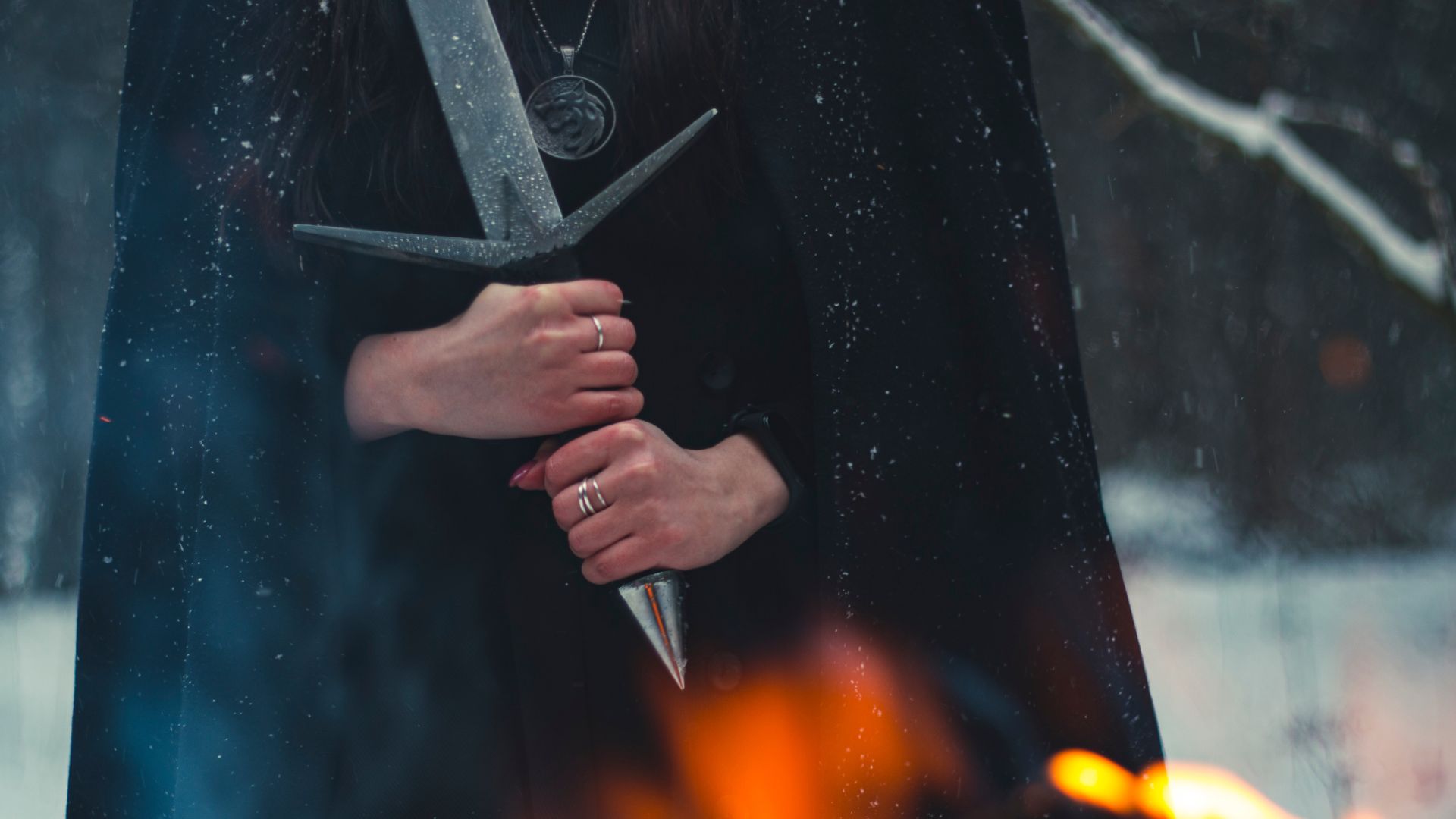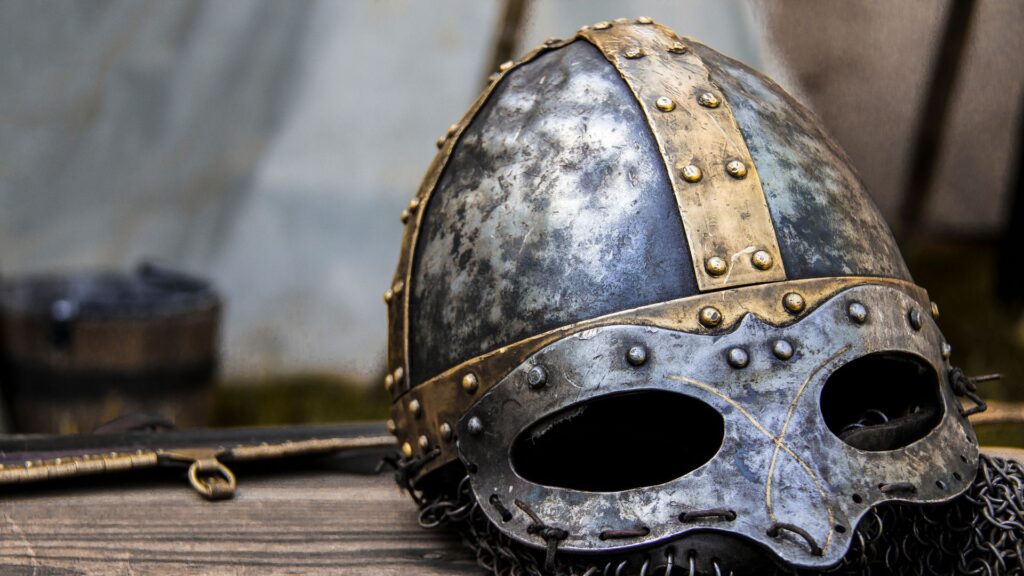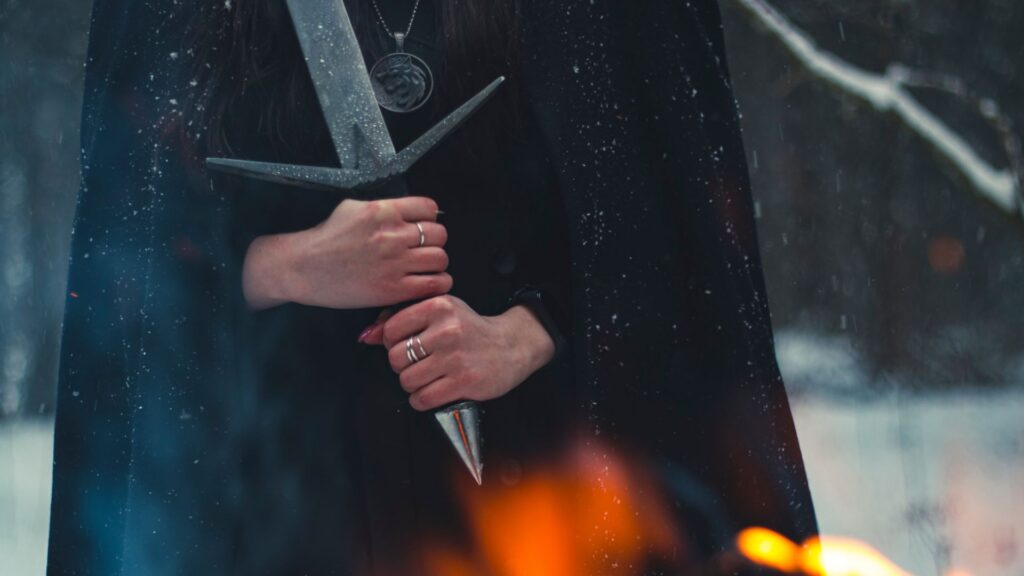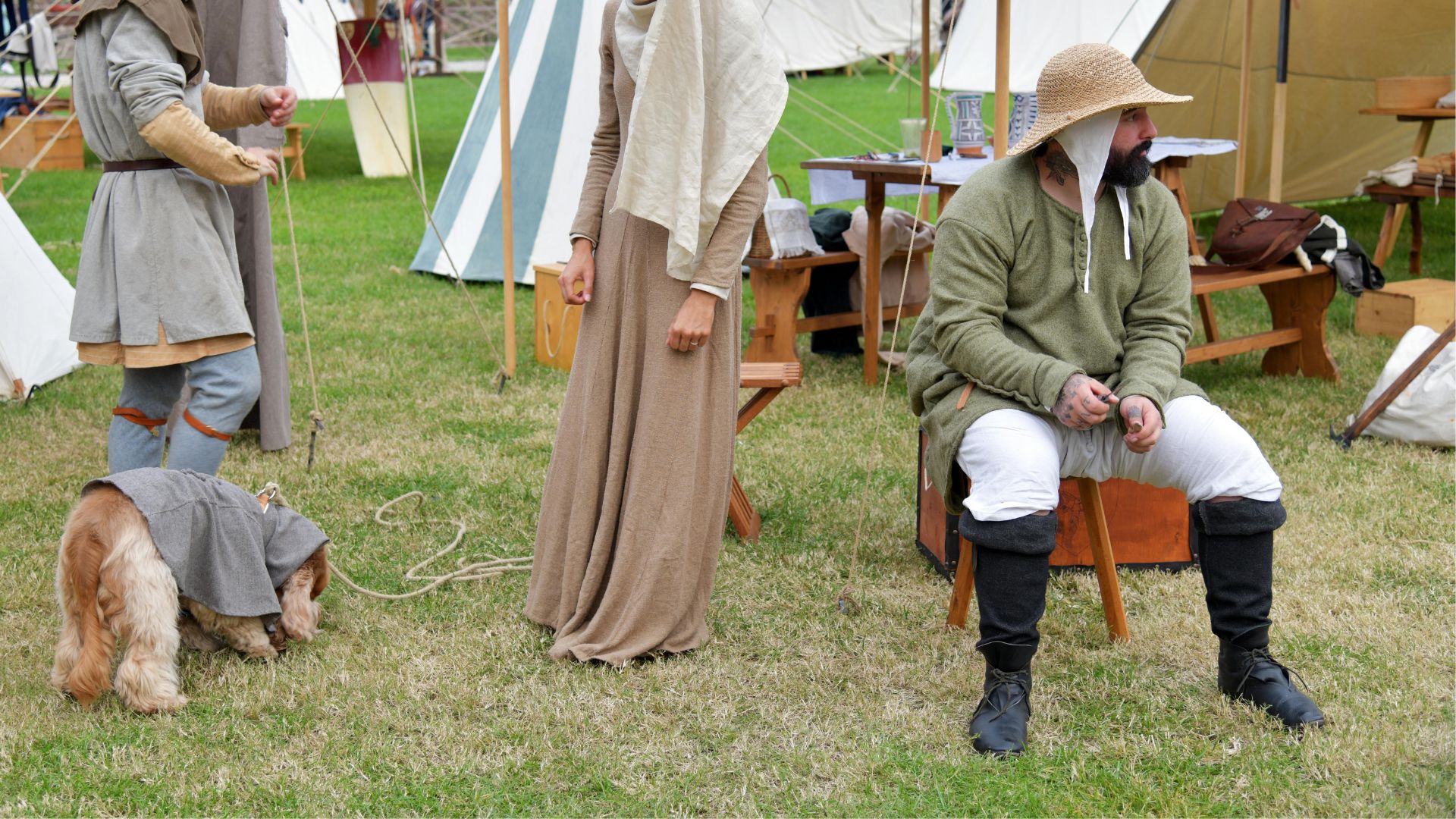
How to build a LARP weapon: Tips and tricks
LARPing (Live Action Role-Playing) is a fantastic way to escape into new worlds, immerse yourself in exciting adventures, and become your favourite character. But, to fully experience the thrill of LARP, you need the right tools – and when it comes to LARPing, weapons are an essential part of the game. Whether you’re wielding a mighty sword, a trusty bow, or a dagger with a deadly gleam, your weapon needs to be both functional and safe.
Building your own LARP weapon can be a rewarding project, allowing you to create something unique that matches your character and style. It also ensures that your weapon is safe to use, as you can control the materials, design, and construction process. In this guide, we’ll walk you through the essentials of crafting a LARP weapon, from choosing the right materials to the construction and detailing process.
Let’s get started:
- The necessity of safe, durable weapons in LARP
- Step 1: Planning and design
- Step 2: Cutting the foam and PVC
- Step 3: Shaping the weapon
- Step 4: Adding the Latex coating
- Step 5: Wrapping and finishing touches
- Safety considerations and the importance of maintaining your LARP weapon

The necessity of safe, durable weapons in LARP
One of the core principles of LARP is safety. While the idea of epic sword fights and dramatic duels is a central part of the experience, it’s crucial that the weapons used are safe for all participants. Real swords, knives, and bows are obviously dangerous, but LARP weapons are designed with safety in mind. They are usually made from materials like foam, latex, and PVC, which are durable enough for play but soft enough to prevent injury.
Durability is equally important. A good LARP weapon needs to withstand the wear and tear of multiple events, often in outdoor environments, and still look great in the heat of battle. Craftsmanship plays a big role in ensuring that your weapon is both functional and long-lasting. Whether you’re a beginner or an experienced LARPer, taking the time to craft your own weapon gives you a deeper connection to your character and the game.
Materials: Overview of Commonly Used Materials for Building LARP Weapons
The materials you choose for your LARP weapon will determine its safety, durability, and overall appearance. Here’s a rundown of the most commonly used materials for making LARP weapons:
Foam: The most common material for LARP weapons is foam, which is both lightweight and soft, making it ideal for safe combat. High-density foam is often used for the core of the weapon, while softer foam layers are added for padding and shaping. It’s easy to work with and relatively inexpensive, which makes it a favourite choice for many LARP weapon builders.
Latex: Latex is used to coat the foam to create a smooth, flexible surface. It helps to provide additional durability while keeping the weapon lightweight. Latex is often used for swords, shields, and other types of bladed weapons. Be sure to use a non-toxic, skin-safe latex, as some latex products can cause allergic reactions.
PVC: PVC (polyvinyl chloride) is commonly used for the weapon’s core structure, as it provides strength and rigidity while still being lightweight. PVC pipes can be easily shaped and cut to form the shaft of a spear or the handle of a sword. When paired with foam, PVC gives the weapon a sturdy base and prevents it from becoming floppy or weak during use.
Fibreglass: In some cases, fibreglass can be used as the core of a weapon for added durability. It’s often used for larger weapons like polearms or halberds, as it provides greater strength than PVC without making the weapon too heavy.
Glue and Adhesives: You’ll need a strong adhesive to bond your foam, PVC, and latex together. Foam-safe glue or contact cement is often used to ensure that the materials stay in place, especially around the handle and any other joints.
Construction Process: Step-by-Step Guide on How to Make a Safe and Functional Weapon
Now that you’ve got your materials, it’s time to start building your weapon. Here’s a basic guide on how to construct a simple LARP sword. You can adapt this process to create other weapons like bows or spears, but the steps will generally be similar.

Step 1: Planning and design
Before you start cutting and gluing, sketch out your weapon. Decide on the dimensions, including the length of the blade, handle, and overall design. Think about the type of character you’re portraying – is it a knight with a longsword, a rogue with a dagger, or a wizard with a staff? Once you’ve got the design, gather your materials and prepare your workspace.
Designing a LARP weapon requires balancing creativity with practicality, ensuring that the weapon fits your character’s persona while remaining safe for combat. Focus on crafting a design that enhances your character’s story, incorporating elements like shape, size, and materials that reflect their background, role, and combat style.
Step 2: Cutting the foam and PVC
weapon. Next, cut the foam to the shape of the blade, ensuring that the blade is wide enough to provide a realistic look while still being soft enough for safe combat. If you’re making a sword, cut foam for the blade and wrap it around the PVC handle, gluing it securely.
When working with foam and PVC for LARP weapons, always wear protective gear such as gloves and safety glasses to prevent injury from sharp tools or flying debris. Additionally, make sure to work in a well-ventilated area, especially when using adhesives or paints, to avoid inhaling harmful fumes.
Step 3: Shaping the weapon
Once the foam is glued in place, use a sharp craft knife or hot wire cutter to shape the blade and handle. Take your time to ensure that the edges of the blade are rounded and smooth to avoid any sharp edges. You can also add extra foam layers to give the weapon more depth or to create different textures, such as a crossguard or knuckle guard.
When designing blades for LARP weapons, the shape of the blade plays a crucial role in both aesthetics and functionality. Common blade shapes include straight, curved, and asymmetrical designs, each serving different character types and combat styles. A straight blade is typical for classic swords like longswords and rapiers, offering precision and balance. Curved blades, such as scimitars or sabres, are ideal for characters who rely on slicing attacks, offering a more fluid, sweeping motion.
Asymmetrical blades, often seen in fantasy weapons like curved elven swords or jagged daggers, add a unique and dramatic flair to a character’s design. Regardless of the shape, the blade must be constructed to have a soft, flexible edge to ensure safety in combat while maintaining a realistic appearance. The shape of the blade should match both the weapon’s intended role and the character’s persona, adding to the immersive experience of the LARP.
Step 4: Adding the Latex coating
Once the foam is shaped, it’s time to apply the latex coating. Latex will add durability and flexibility to the weapon, making it safer for combat. Use a paintbrush to apply a thin layer of latex over the entire weapon, including the blade, handle, and any decorative elements. Allow each layer to dry before applying the next. Two to three layers should be sufficient for most LARP weapons.
Our FAQ on working with Latex Coating and Latex Milk:
What is latex coating or latex milk?
Latex coating, also known as latex milk, is a liquid rubber material commonly used in crafting, particularly in LARP weapons, cosplay props, and other projects that require flexible, durable surfaces. It is applied to foam or other base materials to provide a protective, elastic coating that enhances the durability of the item while keeping it soft and safe for use in LARP settings.
What materials can I apply latex coating to?
Latex coating is primarily used on foam (such as EVA foam) to create LARP weapons, shields, and other props. It can also be applied to cloth, plastic, and some other surfaces, though foam is the most common and recommended base material. Make sure the surface you’re working with is clean and smooth to ensure a strong bond with the latex.
How do I apply latex coating properly?
Preparation: First, ensure your foam or surface is clean and free from dust or debris. You can lightly sand the foam to create a smoother surface if needed.
Sanding (optional): For a smoother, shinier finish, you can lightly sand the latex between layers once it has dried.
Application: Use a brush or a sponge to apply a thin, even layer of latex milk. Start with the edges and work your way to the centre of the surface.
Drying: Allow each layer to dry completely before applying the next one. This usually takes 30 minutes to an hour, depending on the temperature and humidity. Two to three layers are typically sufficient, but more may be needed for thicker coatings.
How many layers of latex should I apply?
For most LARP weapons and props, applying 2-3 layers of latex is sufficient. Each layer adds strength, flexibility, and protection. However, you may want to apply more layers for items that will experience heavy use or for larger props like shields. Just ensure each layer is completely dry before adding the next.
Can latex be applied to the edges of foam?
Yes, latex is ideal for sealing the edges of foam. It adds durability to areas that might wear down more quickly and helps protect the foam from damage. Be sure to apply latex carefully to avoid clumping, and make sure the edges are smooth after the application.
Step 5: Wrapping and finishing touches
Wrap the handle of the weapon with leather strips or cloth to give it a finished, comfortable grip. You can also add decorative elements, such as paint, designs, or symbols, to give the weapon a more personalised and unique look.
Once your LARP weapon is constructed, it’s time to make it look fantastic! Painting and detailing are essential steps in ensuring your weapon looks as epic as it feels.
Painting: Use acrylic paints to add colour to the blade, handle, and any other parts of the weapon. Metallic silver or grey is a great choice for swords or axes to simulate steel, while gold, bronze, or black can add more dramatic effects. Make sure the paint is suitable for the materials you’re using.
Detailing: Add finishing touches like runes, patterns, or symbols to give your weapon a unique flair. You can use fine-tipped paintbrushes or even markers to add small details. For a more worn or weathered look, lightly sand the edges or add a dry-brush technique to create a “battle-hardened” effect.
Safety considerations and the importance of maintaining your LARP weapon
Creating your own LARP weapon is a rewarding experience that allows you to add a personal touch to your LARP adventures. However, it’s important to remember that safety should always come first. Ensure your weapon is padded enough to prevent injury, especially around the edges, and check for any sharp parts that could cause harm.
After your weapon is complete, remember to maintain it properly. Inspect it regularly for wear and tear, especially if you’ve used it in multiple events. If the foam starts to degrade, you can touch it up with more latex or replace worn-out parts. A well-maintained weapon will not only last longer but will also continue to look great on the battlefield.
Let’s recap:
- LARP weapons must be safe to use while also durable enough to withstand multiple events. Crafting your own weapon ensures both safety and quality.
- Common materials include foam (for softness), latex (for flexibility and durability), PVC (for strength in the core), and fibreglass (for added durability). Adhesives like foam-safe glue are essential for construction.
- Start by planning and designing your weapon, then cut the foam and PVC to shape. Apply latex for flexibility, and finish with handle wrapping and detailing to personalise your weapon.
- Use acrylic paints for a metallic finish and add intricate designs, symbols, or weathering effects to enhance the weapon’s appearance. Regular maintenance ensures your weapon remains in top condition.
By following these tips and putting in a little time and effort, you’ll have a LARP weapon that’s not only safe and functional but also a true work of art. Happy crafting, and may your LARP adventures be epic!


